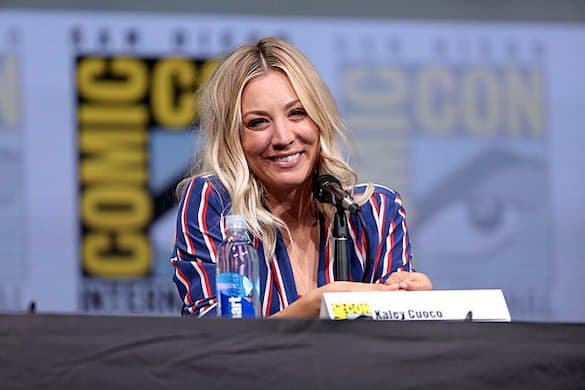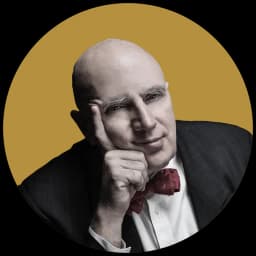Hero or Villain? ‘Harley Quinn’ Has Fans Eager for More
The tone of the series, set by Kaley Cuoco as the voice of Harley, with the character trying to find herself in the aftermath of what turns out to be a permanent breakup, is well-nigh perfect.

‘Harley Quinn’ (HBO Max)
We’ve all known people, at least half of them women, who choose not to pick a team and stick to it, but rather make their decisions on a case-by-case basis. In this case it’s a character, Harley Quinn. I’m not describing her romantic life — even though she spends the first season being infatuated with a man and the latest in love with a woman — but something closer to literal teams, at least as they exist in superhero stories, of good guys and bad guys. Harley Quinn goes from helping the Joker to trying to stop him, from fighting Batman to pondering whether they might be on the same side after all.
In fact, the question of whether she is a hero or a villain is one of the central driving narrative points of the brilliant animated series “Harley Quinn,” for which viewers are eagerly awaiting both a special episode in a few months as well as the eventual fourth season. It’s an especially intriguing internal dilemma in that Harley, as we have known her for the first 25 years or so of her history, has hardly been the introspective, soul-searching type: In fact, there’s been no issue thus far, internal or external, that she hasn’t been able to resolve with a baseball bat.
As you may remember, Harley Quinn is the only major character in the overall Gotham City saga who was created as part of the groundbreaking, original “Batman: The Animated Series.” Introduced in 1992 — the brainchild of writer Paul Dini and series supervisor Bruce Timm — she was conceived as something like a “She-Joker,” serving as both sidekick and girlfriend to the clown prince of crime.
Originally voice-acted by Arleen Sorkin, Harley was also first intended to be a one-off supporting player in a single episode, but quickly proved popular enough to return as a recurring character in the DC Animated Universe. From there, she made a lateral move into the comic book continuity, and has co-starred in many titles of her own as well as a member of teams such as the Gotham Sirens and the Suicide Squad.
Harley first appeared in live action in the 2016 “Suicide Squad” movie, followed by “Harley Quinn: Birds of Prey” in 2020, and therein lies a paradox. The two films themselves were universally considered disappointing, but Margot Robbie did an amazing job in bringing the character to vivid flesh-and-blood life; it’s hard to imagine anyone else playing Harley on the big screen.
Finally, under the helm of James Gunn in the 2021 “The Suicide Squad,” Ms. Robbie’s Harley at last has a story and a director as good as she is. (Although I do wish that they had come up with a more distinctive title.) The recent appointment of Mr. Gunn as the main man — the Kevin Feige, as it were — of the DC Cinematic Universe portends well.
Yet even before “Birds of Prey,” Harley Quinn had been reborn again in an animated series of her own, and it’s the most enjoyable such show since the animated Batman launched 30 years ago. “Harley Quinn,” which had its premiere in 2019, is a distinctly R-rated venture, with four-letter words and gratuitous violence galore. Also, in keeping with ABC’s 1966-’67 “Batman” series, it’s also now the funniest thing on TV without a laugh track.
The tone of the series, set by Kaley Cuoco as the current voice of Harley, with the character trying to find herself in the aftermath of what turns out to be a permanent breakup with “Mister J,” is well-nigh perfect. Harley leads a crew of cast-offs, including Ron Funches as a distinctly inner-city sounding King Shark, and Alan Tudyk as Clayface, who in this incarnation is portrayed as a shapeshifting ham actor who fancies transforming himself into various female characters as well as Billy Bob Thornton.
Two new original characters are also worth noting: J.B. Smoove is a talking plant very much inspired by the Broadway musical “Little Shop of Horrors,” and Jason Alexander is Sy Borgman, a supervillainous but sympathetic Jewish landlord with Transformers-style bionic appendages.
The writing is super sharp: Commissioner Jim Gordon with crippling self-confidence and drinking problems; the Joker as a suburban dad with two Puerto Rican stepchildren; Paradise Island rebranded as a yuppie bachelorette resort; a zombie apocalypse occurring in the middle of a jazz festival.
My favorite line so far, and I can’t quote all of it, occurs when Frank the Plant declares, “If these zombies stop me from seeing a jazz legend go off on his flugelhorn, I will lose my sh–.”
There are guest appearances by the Batman family — though even the Caped Crusader himself is a secondary character — as well as the Justice League. It’s also a running joke that they keep resurrecting delightfully forgettable B-list villains and other oddball characters from the Batman/DC canon, like Kiteman, who speaks in California dude lingo, Clock King, Granny Goodness, Killer Croc, Darkseid (who still seems to be Marvel’s Thanos under another name), and Bane as a woebegone doofus. Not to mention perhaps the least threatening villain ever seen in a four-color story, Condiment King.
Yet there’s just enough seriousness to keep you going; the third season concludes with both a resolution and a cliffhanger: Ironically enough, it’s Harley who saves Gotham from a plan by Bruce Wayne that has gone awry. What will happen next? Tune in tomorrow, same Harley time, same Harley station.

